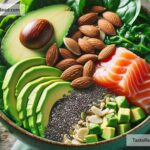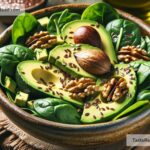Foods That Promote Swallowing Ability: Simple Tips for Easier Eating
Swallowing is something we often take for granted—until it becomes difficult. For people dealing with swallowing challenges, whether due to aging, health conditions, or recovery after surgery, eating can become stressful. However, the good news is that certain foods can help promote swallowing ability, making meals more enjoyable and safer. In this article, we’ll explore foods that support swallowing, how to prepare them, and tips for creating a swallowing-friendly diet.
Why Swallowing Can Be Hard
Swallowing is a complex process that involves several muscles and nerves working together in harmony. Conditions like dysphagia (difficulty swallowing), stroke, Parkinson’s disease, or even simple aging can weaken these muscles or disrupt coordination. When swallowing is hard, eating and drinking may lead to choking, coughing, or becoming tired mid-meal. For these reasons, choosing the right foods is essential to avoid complications and provide proper nutrition.
Foods That Promote Swallowing Ability
The right foods should be easy to chew and move smoothly down the throat without causing choking or blockages. Here are some categories of foods that promote swallowing:
1. Soft Foods
Soft foods are easier for the muscles to manage. They require minimal chewing and slide down the throat effortlessly. Examples include:
– Mashed potatoes: Soft, creamy textures are great for swallowing.
– Bananas: Ripe bananas are smooth and simple to eat.
– Applesauce: Apples that are blended into a sauce are safer and easier to swallow than raw fruits.
– Yogurt: Thick, creamy yogurt offers protein and is easy to manage.
– Eggs: Scrambled eggs are soft and versatile.
2. Pureed Foods
Pureed foods are blended into a smooth consistency that makes eating easier. They’re ideal for people with more serious swallowing challenges. Examples include:
– Pureed vegetables: Sweet potatoes, carrots, and squash blend into creamy textures.
– Pureed fruits: Peaches, pears, and mangoes can be pureed for a simple side dish or dessert.
– Pureed meats: Chicken, beef, or fish can be cooked and blended with broth for easy swallowing.
3. Liquids with Added Thickness
Thin liquids like water or juice can be hard to swallow because they move too quickly down the throat. Thickened liquids are easier to control and safer for people with swallowing difficulties. You can use commercial thickeners or naturally thick drinks like:
– Smoothies: Blend fruits, yogurt, and milk for a portable, easy-to-swallow meal.
– Milkshakes: Thick milkshakes give calories and nutrients while being gentle on the throat.
– Soups: Creamy soups are perfect, but avoid thin brothy soups unless they’re thickened.
4. Moist Foods
Dry food can lodge in the throat and cause discomfort. Moist foods reduce this risk and glide down more easily. Examples of moist foods include:
– Steamed vegetables: Soft, tender vegetables retain moisture.
– Pasta: Cook varieties like macaroni or noodles until soft, and add sauces to improve texture.
– Rice dishes: Combine cooked rice with creamy ingredients or broths to keep it moist.
5. Foods with Slippery Textures
Foods that have a smooth, slippery texture are easier to handle for swallowing. Examples include:
– Pudding: A popular option because of its smooth consistency.
– Jell-O (gelatin): Gelatin-based foods lightly slide down the throat.
– Avocado: Soft and creamy fruit that is also rich in healthy fats.
Foods to Avoid
Some foods are challenging or even unsafe for those with swallowing difficulty. Examples to skip:
– Dry foods: Crackers, bread, and rice without moisture can stick in the throat.
– Tough meats: Large chunks or chewy textures are hard to swallow.
– Crunchy foods: Chips, raw vegetables, and nuts can cause choking.
– Mixed textures: Foods like cereal with milk or chunky soup can be confusing for the throat.
Preparation Tips for Easy Swallowing
Adjusting how you prepare food can greatly improve swallowing ability. Here’s how to make meals safer and more enjoyable:
1. Blend or puree: Use a blender or food processor to create smooth, lump-free dishes.
2. Add moisture: Incorporate broths, sauces, or soups to moisten food.
3. Cut food into small pieces: Bite-sized portions are easier to chew and swallow.
4. Cook until tender: Steam, boil, or bake food until soft.
5. Experiment with thickeners: Use cornstarch, gelatin, or commercial products to give liquids a thicker consistency.
Stay Hydrated (With Caution)
Hydration is important, but thin liquids like water can be tricky for those with swallowing issues. Drinking thickened water or flavored alternatives like thickened tea or smoothies ensures safety while staying hydrated.
Consult a Specialist
If swallowing issues persist, it’s essential to consult a doctor or speech-language pathologist. They can assess the condition and recommend specific types of food based on individual needs. Sometimes, they may suggest exercises to strengthen swallowing muscles.
Conclusion
Swallowing-friendly foods don’t have to be bland or boring. By choosing soft, pureed, and moist options, you can enjoy delicious meals while avoiding discomfort or choking risks. These thoughtful food choices not only make eating easier but also provide essential nutrients for overall health. Remember that everyone’s needs are unique, so experimenting with textures and flavors can make eating both safe and enjoyable.
If you or a loved one is facing swallowing challenges, the most important thing is to stay patient, flexible, and consult professionals for guidance. Eating should be a pleasant experience—and with the right foods, it can be!


